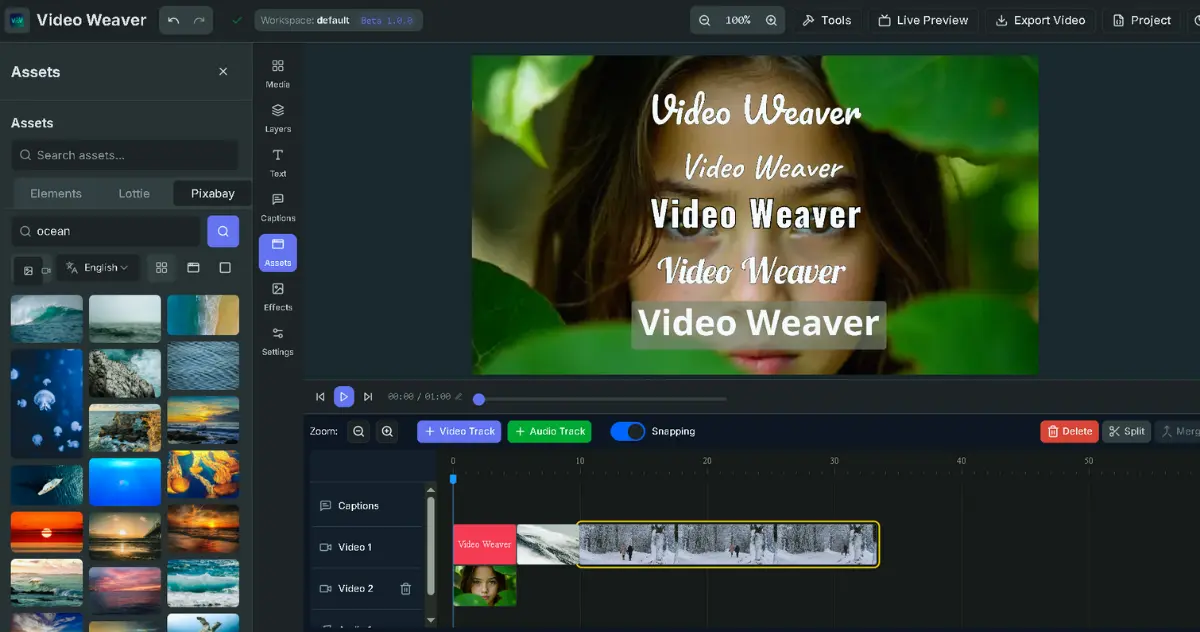Meta AI's New Ace! Open-Source DINOv3 Model: A Game Changer for Visual AI?
Meta AI recently open-sourced its new-generation universal image recognition model, DINOv3. With its powerful ‘self-supervised learning’ capabilities, it achieves top-tier performance in various visual tasks without manual annotation. From environmental monitoring to medical imaging, its application potential is sparking heated discussions among developers worldwide.
Recently, the hottest topic in the AI community has been Meta AI’s official open-sourcing of their latest universal image recognition model—DINOv3. The news immediately created a stir among developers and research communities worldwide. The most astonishing aspect of this model is its use of a “self-supervised learning” framework. In simple terms, the AI learns by looking at images itself, completely eliminating the need for humans to painstakingly label “this is a cat” or “that is a dog.” This breakthrough can be said to have opened a new door for the field of computer vision.
What is “Self-Supervised Learning”? Why is it so important?
Let’s first talk about this seemingly esoteric technology. In the past, training a smart image recognition model required thousands of hours of manual labeling. Engineers had to prepare massive amounts of images and tell the model what was in each one, picture by picture. This process was not only time-consuming and labor-intensive but also incredibly expensive.
But DINOv3 has completely changed the game.
Through self-supervised learning, it can autonomously learn, generalize, and extract key features from unlabeled images. Imagine it like a baby learning about the world by observing, rather than by parents teaching with flashcards. This innovation not only significantly reduces the barrier and cost of data preparation but also allows AI to show unprecedented potential in fields where data is scarce or labeling is extremely expensive (such as professional medical imaging or rare species identification).
Developers on social media have also confirmed this, with much feedback indicating that DINOv3’s performance in various benchmark tests is comparable to top models like SigLIP 2 and Perception Encoder, and even surpasses them in some tasks, demonstrating its amazing versatility.
Not Just Seeing, But Seeing Finely! DINOv3’s High-Resolution Features
Another killer feature of DINOv3 is its high-quality, high-resolution dense feature representation. What does this mean?
Simply put, it can grasp both the “global appearance” of an image and capture the extremely small “local details” in the scene. It’s like when we look at a painting, we can appreciate the overall composition and mood, but also notice a delicate signature hidden in a corner by the artist. This “near and far” visual capability allows DINOv3 to handle various visual tasks with ease.
Whether it’s image classification, object detection, semantic segmentation, or more complex tasks like image retrieval and depth estimation, DINOv3 provides powerful support. What’s more, its capabilities are not limited to handling the everyday photos we take with our phones; it can also easily manage highly professional and complex data types such as satellite imagery and medical images (like X-rays or CT scans), laying a solid foundation for cross-disciplinary AI applications.
Data Speaks for Itself: How Strong is DINOv3 Really?
Let’s look at the data directly. According to the performance comparison table released by Meta AI, DINOv3’s performance is indeed impressive.
| TASK | BENCHMARK | DINOv3 | DINOv2 | SigLIP 2 | PE |
|---|---|---|---|---|---|
| Segmentation | ADE-20k | 55.9 | 49.5 | 42.7 | 38.9 |
| Depth estimation | NYU ↓ | 0.309 | 0.372 | 0.494 | 0.436 |
| Video tracking | DAVIS | 83.3 | 76.6 | 62.9 | 49.8 |
| Instance retrieval | Met | 55.4 | 44.6 | 13.9 | 10.6 |
| Image classification | ImageNet ReaL | 90.4 | 89.9 | 90.5 | 90.4 |
| Image classification | ObjectNet | 79.0 | 66.4 | 78.6 | 80.2 |
| Fine-grained image classification | iNaturalist 2021 | 89.8 | 86.1 | 82.7 | 87.0 |
From the table, we can clearly see:
- In tasks like image segmentation, video tracking, instance retrieval, and fine-grained image classification, DINOv3’s scores are far ahead, leaving its predecessor and other models behind.
- In the depth estimation task, a lower score indicates better performance (note the down arrow next to NYU), and DINOv3 once again takes the crown with a score of 0.309.
- Even in traditional image classification tasks, DINOv3 performs on par with models specifically designed for classification, such as SigLIP 2 and PE, demonstrating its comprehensive strength.
These data prove that DINOv3 is not just a concept, but a truly powerful and reliable tool.
From the Lab to the Real World: DINOv3’s Wide Range of Application Scenarios
Where can such a powerful model be used? DINOv3’s versatility and high performance give it immense potential in many industries.
- Environmental Monitoring: Analyzing satellite images to monitor deforestation, glacial melting, or land use changes, providing key data for environmental protection and resource management.
- Autonomous Driving: Significantly improving the perception of autonomous driving systems on road environments (such as pedestrians, vehicles, traffic signs) through more accurate object detection and scene segmentation, making driving safer.
- Healthcare: In medical image analysis, DINOv3 can assist doctors in detecting early lesions, accurately segmenting organs or tumors, thereby improving the efficiency and accuracy of diagnosis.
- Smart Security: Its powerful personnel identification and behavior analysis capabilities can make security monitoring systems more intelligent, providing real-time warnings of potential risks.
For many small and medium-sized enterprises and research institutions, the open-sourcing of DINOv3 is a blessing. It provides an excellent low-cost opportunity to access top-tier AI technology, especially when data and computing resources are relatively limited.
Open Source Empowerment: How to Get Started with DINOv3?
This time, Meta AI not only published a paper but also completely open-sourced the full training code and pre-trained models of DINOv3 under a business-friendly license. This means that both individual developers and commercial companies can freely use and modify it.
- Easy to Get Started: Developers can easily load the model through mainstream platforms like PyTorch Hub and Hugging Face Transformers.
- Multiple Choices: Meta provides various model sizes, from 21M to 7B parameters, so whether your computing resource is a high-end server or a personal computer, you can find a suitable version.
- Thoughtful Resources: The official repository also provides evaluation code and example notebooks for downstream tasks, helping developers quickly get started and integrate DINOv3 into their own projects.
Project URL: https://github.com/facebookresearch/dinov3
Conclusion: A New Chapter for Visual AI, and What We Need to Think About
The release of DINOv3 is undoubtedly a technological leap for Meta AI in the field of computer vision, and a huge contribution to the entire open-source AI ecosystem. Its self-supervised learning capabilities and multi-task adaptability provide developers with unprecedented freedom and flexibility. From environment to healthcare, from autonomous driving to security, DINOv3 is accelerating the implementation of AI vision technology, helping us build a smarter and more efficient future.
Of course, technological progress also comes with new challenges. There are voices in the community reminding us that the widespread application of powerful models like DINOv3 may bring potential risks such as data privacy and algorithmic bias. In the future, how to enjoy the dividends of technology while ensuring its ethics and fairness in practical deployment is a topic we need to pay attention to and solve together.




